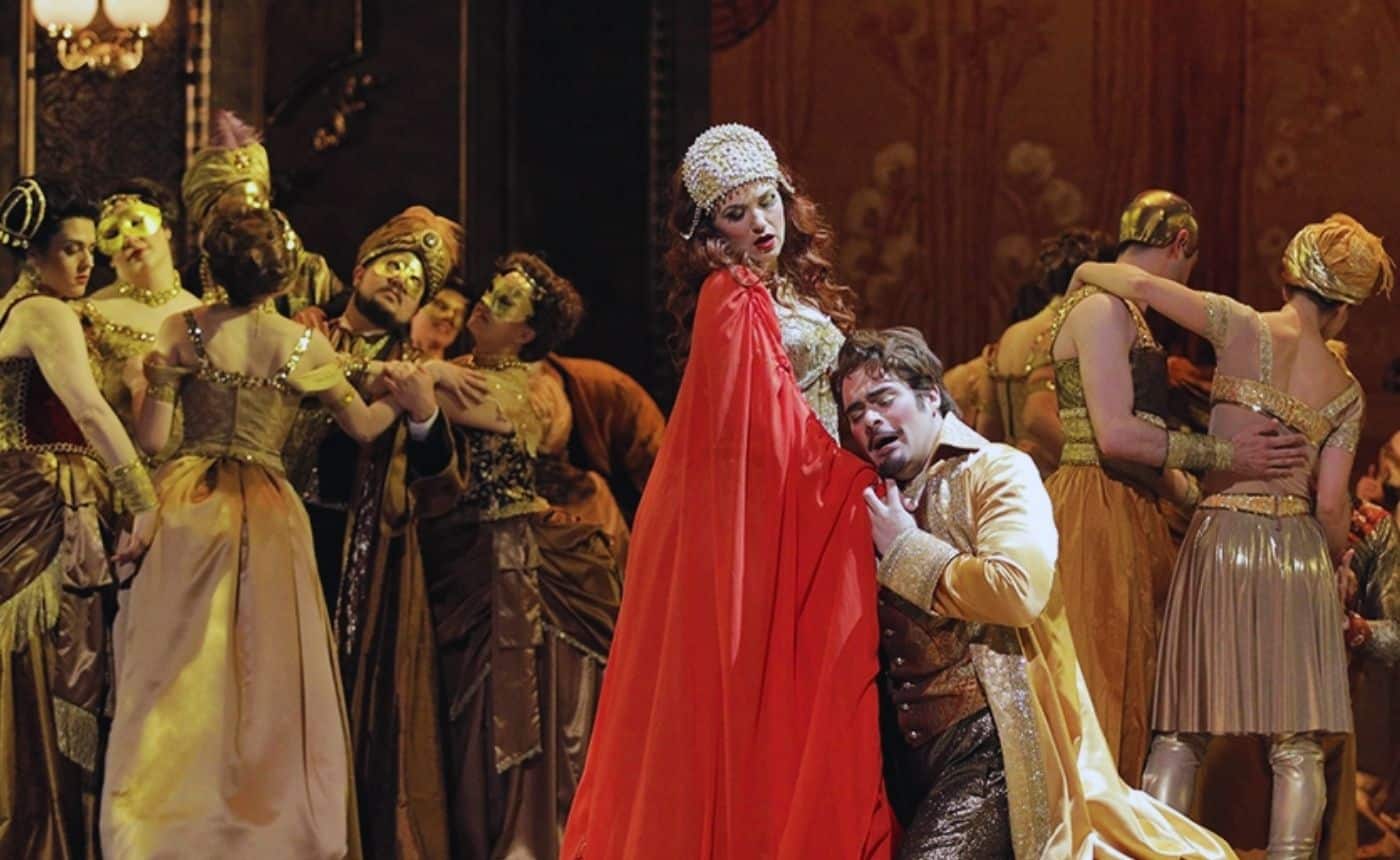The Secrets of Utah Opera’s Rentals Department
By Melonie Mortensen
With Contributions by Verona Green
Most of the productions at Utah Opera include new costumes built by the talented costume shop. But what, you may ask, happens to the costumes after the run of the show? Are they sold, stored, given away? The answer lies in the bowels of the Utah Opera Production Studios.
Nestled between the costume shop and the scene shop, there is a storage area, fondly referred to as the ‘Giant Closet.’ Racks 16 feet tall are stuffed with shows dating back 30 years or more, with two steel ladders in the aisles to get to them. Boxes stacked at least as high or higher are mingled in with the costumes, and contain hats, fabric scraps, and other accessories vital to each production. The costumes are organized by show, apart from a few general men’s and women’s areas, which helps facilitate the successful and efficient costume rentals program.
Companies from all over the country and Canada find pictures taken during each production, on the Utah Opera Costume Rentals website, or request a photo book. Once they determine that the costumes Utah Opera has available will fit their needs, they contact Rose Brown, Costume Director, and a contract is set up. Rose will also try to get the initial information of what will be needed by the company at this point.
The information is then sent to Verona Green, Rentals Supervisor, who has the entire stock in her memory having worked with Utah Opera for at least 27 years. Melonie Mortensen, her assistant, however, is grateful to have the photo books they have on hand as an extra reference. Verona organizes the information sent to her, including the number and description of the desired costume sets, and measurement sheets for the performers. If she finds any discrepancies, or even simply to make sure everyone is on the same page, she will talk with directors, company managers and costumers. Because of this, Verona can boast an extremely broad base of professional acquaintances, spanning from Florida to California.
Verona and Melonie then pull out the show and measure each costume as accurately as possible. Because the shows are consistently rented or otherwise in use, it is impossible to have one standard size. Once the rack has been measured, they compare the measurements of the cast with the measurements on the costumes and match them up accordingly.
The leads can be the most troublesome because of how specific their costumes are. There are often up to three sets of analogous lead costumes in different size ranges. On occasion, a director might have an issue, not with the costume itself or the size, but with the colour. “We know the original was blue,” they might say, “but could you find it in pink?” It is at this point that Verona’s knowledge of stock becomes particularly useful. She and Melonie will often brainstorm other shows in the same or similar era to find something acceptable to both the company renting the costume as well as upholding the original vision of designer Susan Allred.
Necessary adjustments and alterations are written down for the stitchers and all alterations are done by the Utah Opera Costume Shop staff. Once the alterations have been completed, the accessories pulled out and organized according to character and the hats pulled, Melonie starts writing it all up. Thanks to Mike Lund, Information Systems Manager, there is a computer program specifically tailored to help them document the shows accurately and efficiently. (We even have a Canadian version to help facilitate getting costumes through customs.)
The show is then packed into very big, very heavy boxes with wooden frames in the bottom to support the nearly 150 lbs worth of clothing in each. After they are passed off to the shipper, Melonie and Verona always heave a great sigh of relief — until they remember that the show will be coming back. Dirty. Although the dry cleaning of the costumes is sent out, all other laundry is done in house, as well as pre-treating and disinfecting. The show is then put back on the racks to await their next adventure.
For the costumes at Utah Opera Company, at least, there is life after a production.












